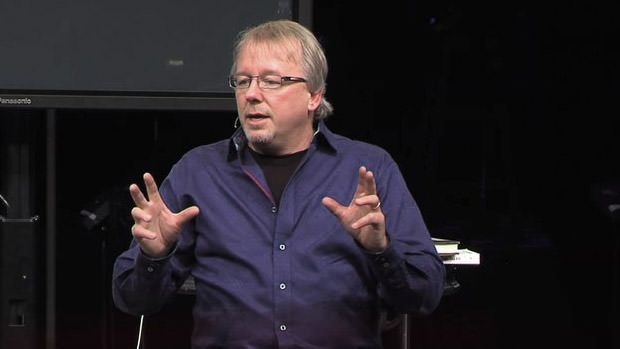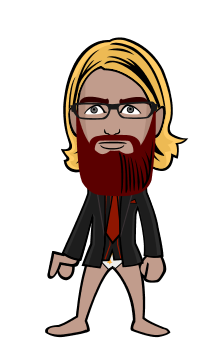 Every thoughtful person believes in a series of causes and effects in nature, each effect becoming the cause of some other effect. This is the basis of all scientific inquiry.
Every thoughtful person believes in a series of causes and effects in nature, each effect becoming the cause of some other effect. This is the basis of all scientific inquiry.
Albert Einstein put it like this: “The scientist is possessed by the sense of universal causation.”
But the acceptance of this as fact compels one to admit that there must be a beginning to any series—or the chain of events never would have gotten started. There could never have been a first effect if there had not been a first cause.
Consider the logic that flows through these three statements:
Whatever has a beginning has a cause.
The universe has a beginning.
Therefore, the universe has a cause.
THE FIRST STATEMENT, WHATEVER HAS A BEGINNING HAS A CAUSE, CAN BE ILLUSTRATED WITH A COUPLE OF REAL-LIFE SCENARIOS:
If you go to the doctor to find out why a lump has begun to grow in your throat, you’re not going to be satisfied to hear there’s no cause for the lump—that it just sprang up for no reason. If he or she tries to pass off an explanation like that, you’re going to find a new doctor!
Or if you’re a parent, and you go into one of your kids’ rooms and find a hole punched through the wall, you’re not going to accept a causeless, self-existent hole-in-the-wall theory. Instead, you want a real explanation from your son or daughter—the old-fashioned kind that actually explains what happened.
Just as the appearance of lumps in your throat or holes in your kids’ walls needs an explanation, so does the sudden appearance of a universe!
THE SECOND STATEMENT SAYS THE UNIVERSE HAS A BEGINNING.
The only other options are to say that it is eternal and has simply always been there— an answer akin to the causeless, self-existent hole-in-the-wall theory—or to claim that it popped into existence out of thin air. But as the song in the classic movie The Sound of Music so poignantly reminds us, “Nothing comes from nothing, nothing ever could.”
Common sense tells us that the universe had a beginning, but we know this through modern science as well. Robert Jastrow, astronomer and founding director of NASA’s Goddard Institute for Space Studies, summarized the conclusion of decades of scientific research in his powerful book God and the Astronomers:
Five independent lines of evidence—the motions of the galaxies, the discovery
of the primordial fireball, the laws of thermodynamics, the abundance of helium in the Universe and the life story of the stars—point to one conclusion; all indicate that the Universe had a beginning.
Jastrow also goes into detail concerning what scientists believe about that amazing beginning, usually referred to in scientific circles as the Big Bang:
The matter of the Universe is packed together into one dense mass under enormous pressure, and with temperatures ranging up to trillions of degrees. The dazzling brilliance of the radiation in this dense, hot Universe must have been beyond description. The picture suggests the explosion of a cosmic hydrogen bomb. The instant in which the cosmic bomb exploded marked the birth of the Universe.
The seeds of everything that has happened in the Universe since were planted in that first instant; every star, every planet and every living creature in the Universe owes its physical origins to events that were set in motion in the moment of the cosmic explosion. In a purely physical sense, it was the moment of creation.
Theoretical physicist Stephen Hawking adds these amazing details about the astounding rate of expansion of the universe resulting immediately from the Big Bang, or what physicists refer to as “inflation”: "According to even conservative estimates, during this cosmological inflation, the universe expanded by a factor of 1,000,000,000,000,000,000, 000,000,000,000 in .0000000000000 0000000000000000000001 second. It was as if a coin 1 centimeter in diameter suddenly blew up to ten million times the width of the Milky Way."
Don’t rush over that quote too quickly—it warrants a second and maybe a third reading. This is a highly regarded scientist telling us what virtually every modern scientist believes: that the universe expanded at a rate equivalent to a coin in your pocket becoming many millions of times wider than our entire galaxy—which all of the efforts of modern space exploration have barely even begun to explore—and it did this in a fraction of a nanosecond! But neither Hawking nor any physicist on earth has a scientific explanation for why or how that happened.
In theological terms, we call this a miracle.
So both logic and science tell us that the universe had a beginning—and a spectacularly grand one at that. And we established earlier that whatever has a beginning has a cause. So this leads us to the natural conclusion of the third statement listed previously:
THE UNIVERSE HAD A CAUSE.
But that leads us to the realization that the cause had to be something outside the universe. And that “something” would have to be smart enough, powerful enough, and old enough— not to mention have enough of a creative, artistic flair—to be able to pull off such a grand “effect.” That sounds to me like something uncannily similar to the divine being described in the Bible, which starts with these words: “In the beginning God created the heavens and the earth.”
He’s the same one of whom King David wrote (Psalm 19:1-4): "The heavens proclaim the glory of God. The skies display his craftsmanship. Day after day they continue to speak; night after night they make him known. They speak without a sound or word; their voice is never heard. Yet their message has gone throughout the earth, and their words to all the world."
EVIDENCE FROM DESIGN IN THE UNIVERSE
Suppose you are standing at an airport, watching a jet airliner coming in to land. Someone says to you, “A lot of people think that plane is the result of someone’s carefully designed plans, but I know better. There was really no intelligence at work on it at all. In some strange way the metal just came out of the ground and fashioned itself into flat sheets. And then these metal sheets slowly began to grow together and formed the fuselage and wings and tail. Then after a long while the engines slowly grew in place, and one day some people came along and discovered the plane, all finished and ready to fly.”
You would probably think that guy was crazy, and perhaps try to avoid him in the future. Why? You know intuitively that where there is a design, there must be a designer, and having seen other products of the human mind like the airplane, you are sure that it was planned by human intelligence and built by human skill.
Yet there are sophisticated and highly educated people who tell us that the entire universe, with all its order and intricate design, came into being by chance—that there was really no higher intelligence involved. They claim that there is no God but nature.
This is true especially in light of our growing understanding of what many thinkers, including renowned physicist Paul Davies, refer to as the “fine-tuning” of the universe. Cutting-edge science is now telling us that the building blocks of our world—the laws and physical constants that govern all the matter in the universe— appear to be precisely balanced and finely tuned for life to occur and flourish.
These laws and constants were set at the Big Bang mentioned earlier. In other words, when the universe exploded into being, there were a number of variables within the very structure of the universe itself that had to be set exactly as they are in order for life to exist. Scientists have so far discovered about fifty of these parameters and constants that must be “just so” in order for life to be possible anywhere in the universe.
Let’s look at an example. Physicists have discovered four forces in nature, one of them being the force of gravity. They have calculated that the strength of each of these forces must fall within a very specific range or there would be no conscious life possible. If the force of gravity, for example, were to change by one part in ten thousand billion billion billion relative to the total range of the strengths of the four forces in nature, conscious life would be virtually impos- sible anywhere in the universe.
There are many other parameters and constants that are also finely tuned and that, if changed even slightly, would have disastrous consequences for life in our universe. For example, if the neutron were not exactly as it is—about 1.001 times the mass of the proton—then all protons would have decayed into neutrons or all neutrons would have decayed into protons and life would not be possible. Or if the explosion of the Big Bang had differed in strength by as little as one part in 1060 (one part in a trillion trillion trillion trillion trillion), the universe would have either quickly collapsed back on itself or expanded too swiftly for stars to form. Either way, life would be impossible. The list of such fixed parameters goes on and on.
What makes all this even more fascinating is that these finely tuned parameters and constants are independent of one another. In other words, assuming all were just right for life except for one parameter, which was off to the smallest degree, that alone would make it impossible for you or me to be alive today.
When you add this all up, it becomes virtually impossible to believe all of these fine-tuned constants came to be “just so” by chance. But instead, all these realities point strongly to a God, a Creator, for and through whom all things exist.
This blog is an excerpt from The Reason Why: Faith Makes Sense by Mark Mittelberg. You can order bulk copies for your church or group for greatly discounted prices (44 copies for $2.79 per copy, plus shipping). Just let Mark know here.
Mark Mittelberg is a bestselling author, speaker, outreach strategist, and the Executive Director of The Center for American Evangelism, in partnership with Houston Baptist University. He is the bestselling author of multiple books, including Becoming a Contagious Christian with Lee Strobel and Bill Hybels. All together, his published pieces have sold a combined total of nearly three million copies. Mark and his wife Heidi have two grown children, and live near Denver, Colorado. You can connect with him on twitter.
Editor's note: Mark will be speaking with us for our IGNITE Tour in 2016 in Houston, San Antonio, Dallas, and Fort Worth, Texas. More details to come in coming weeks.



